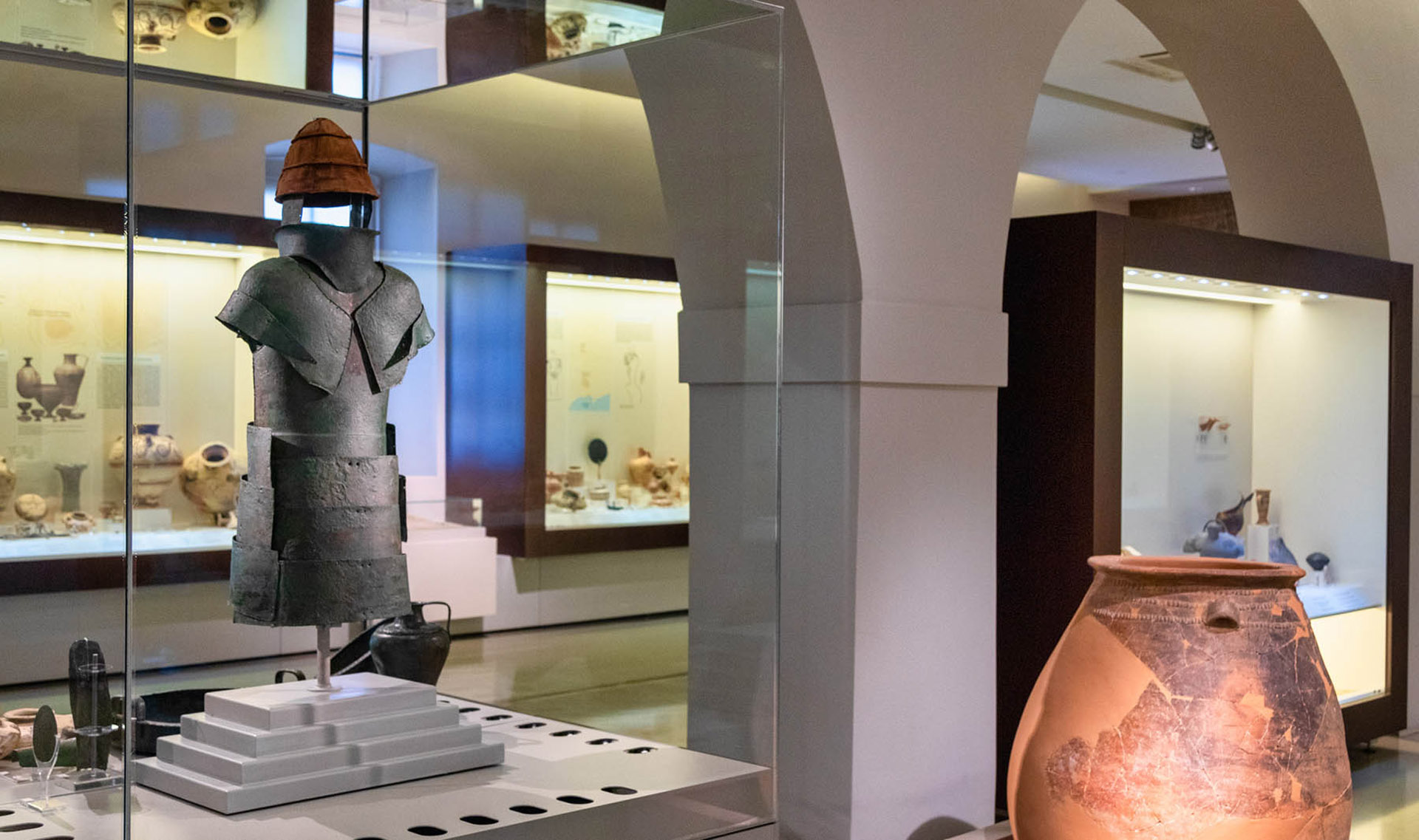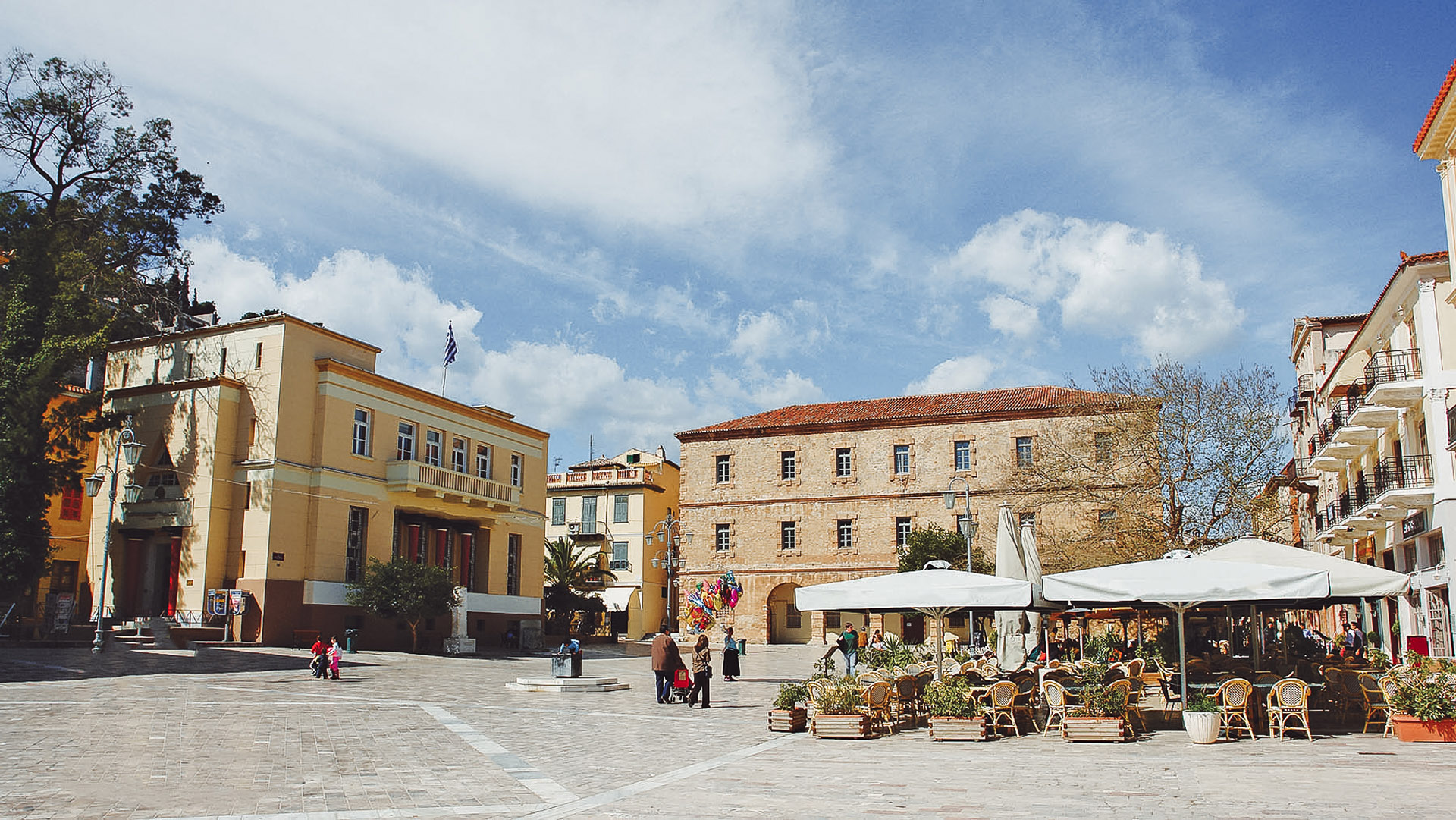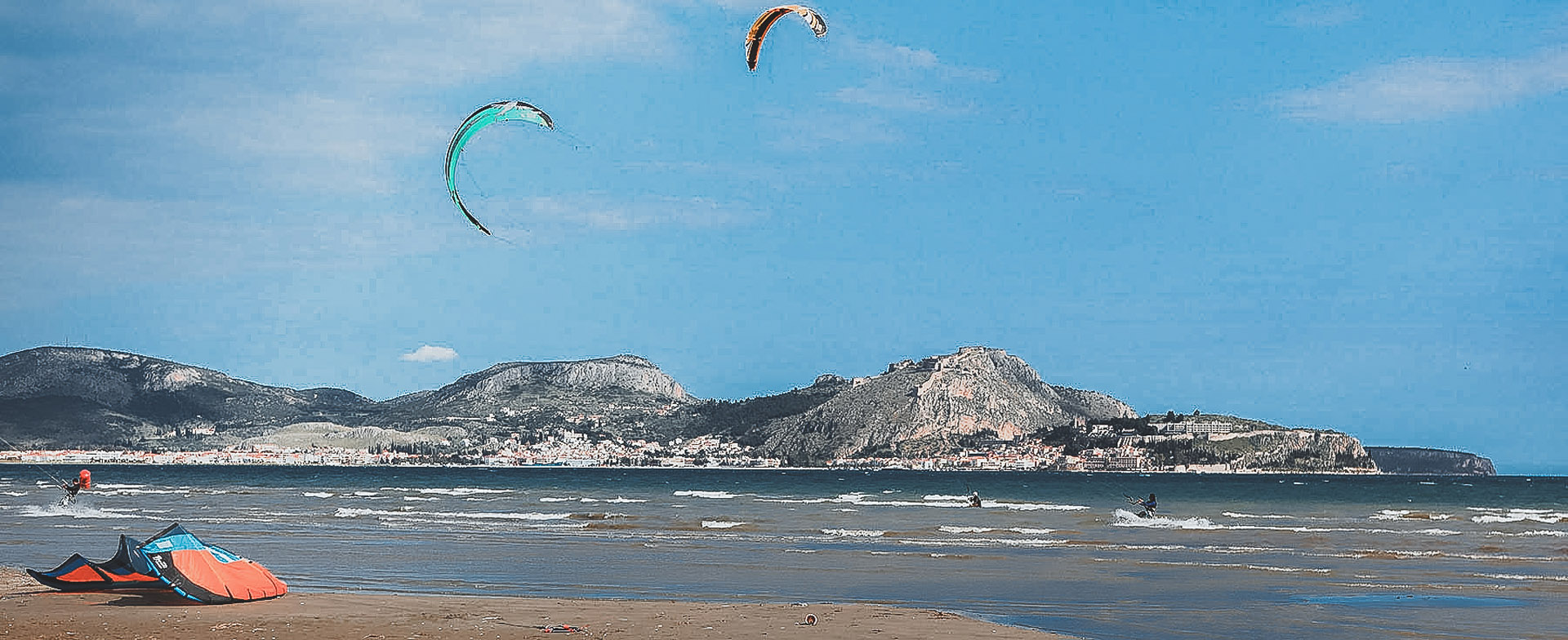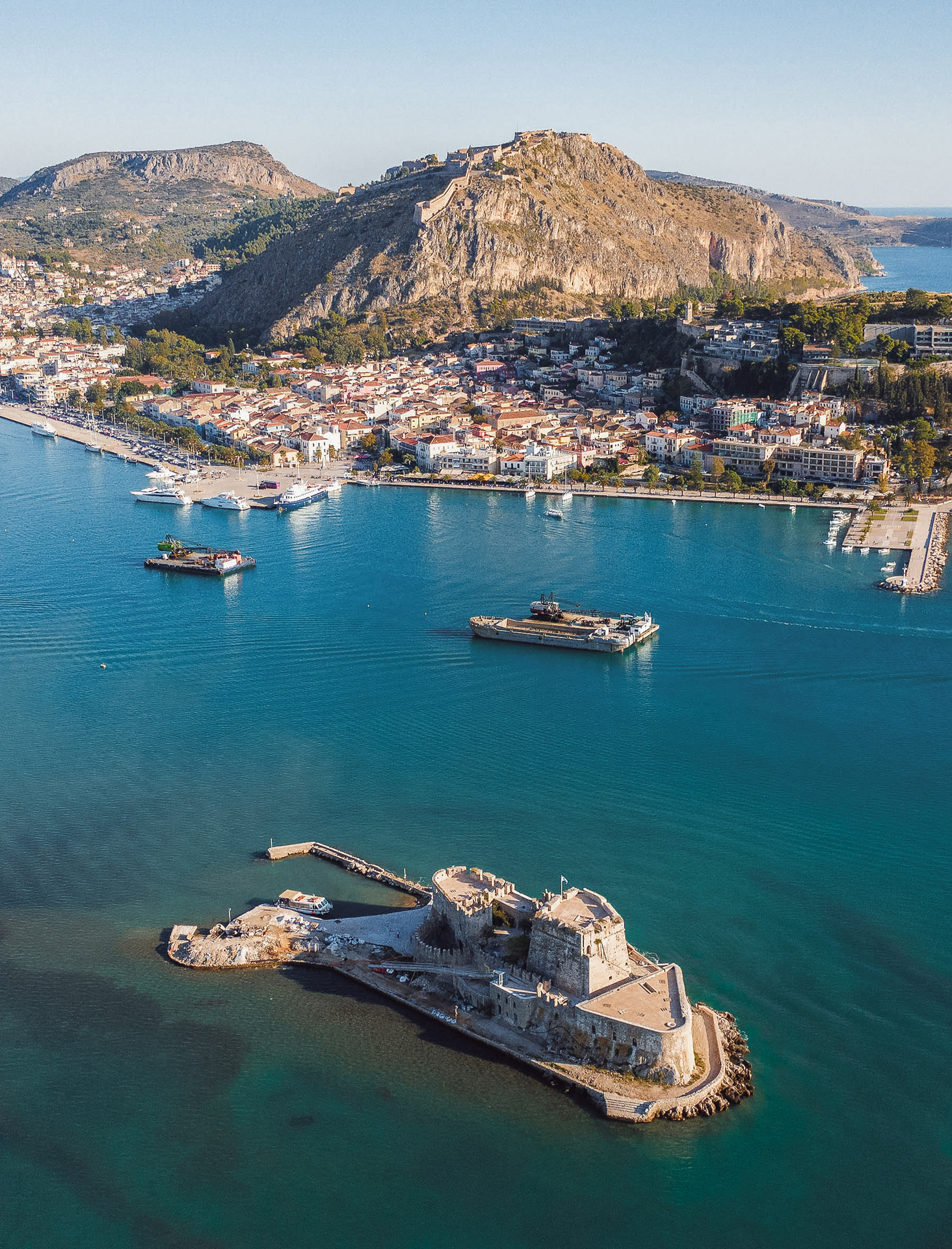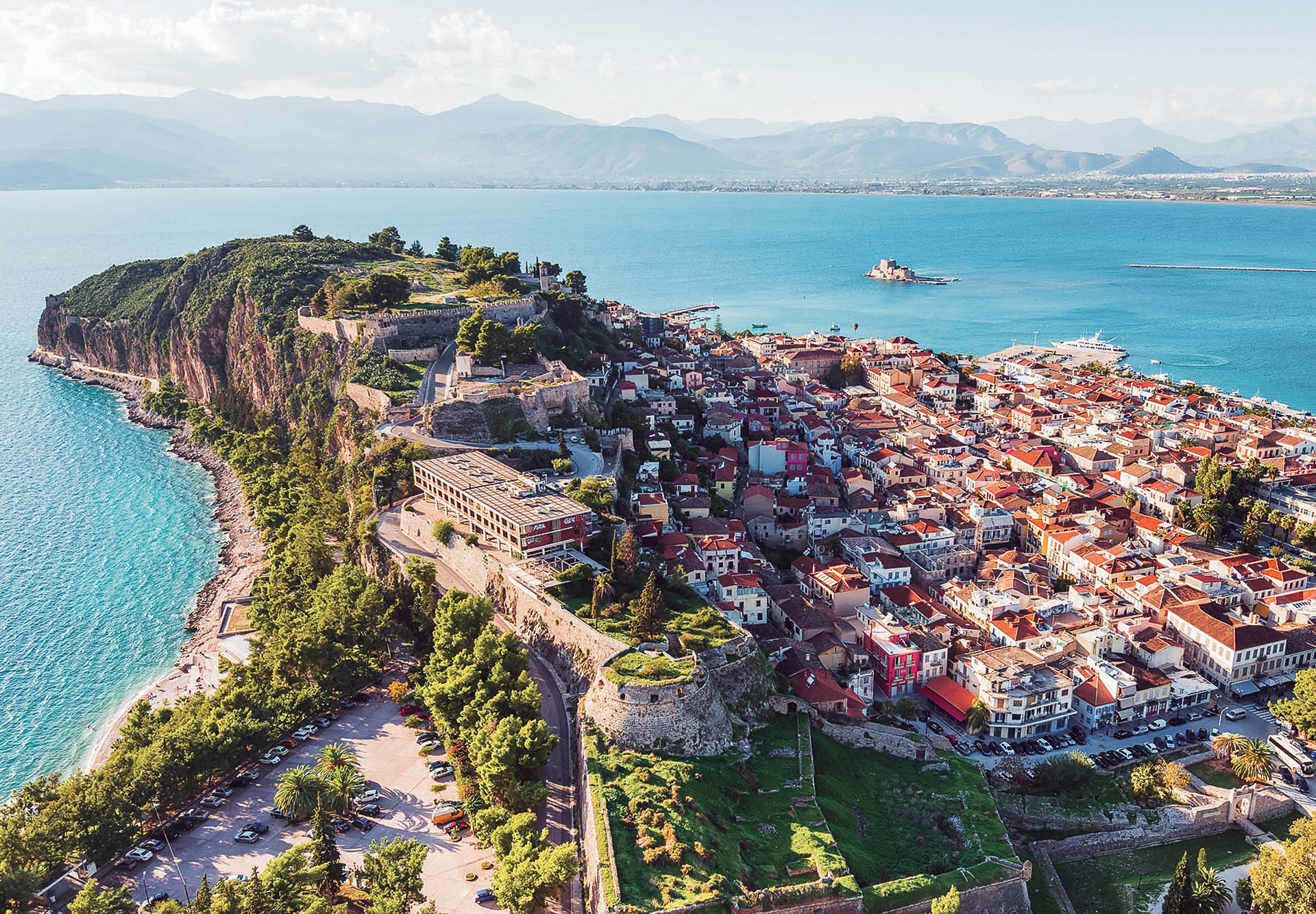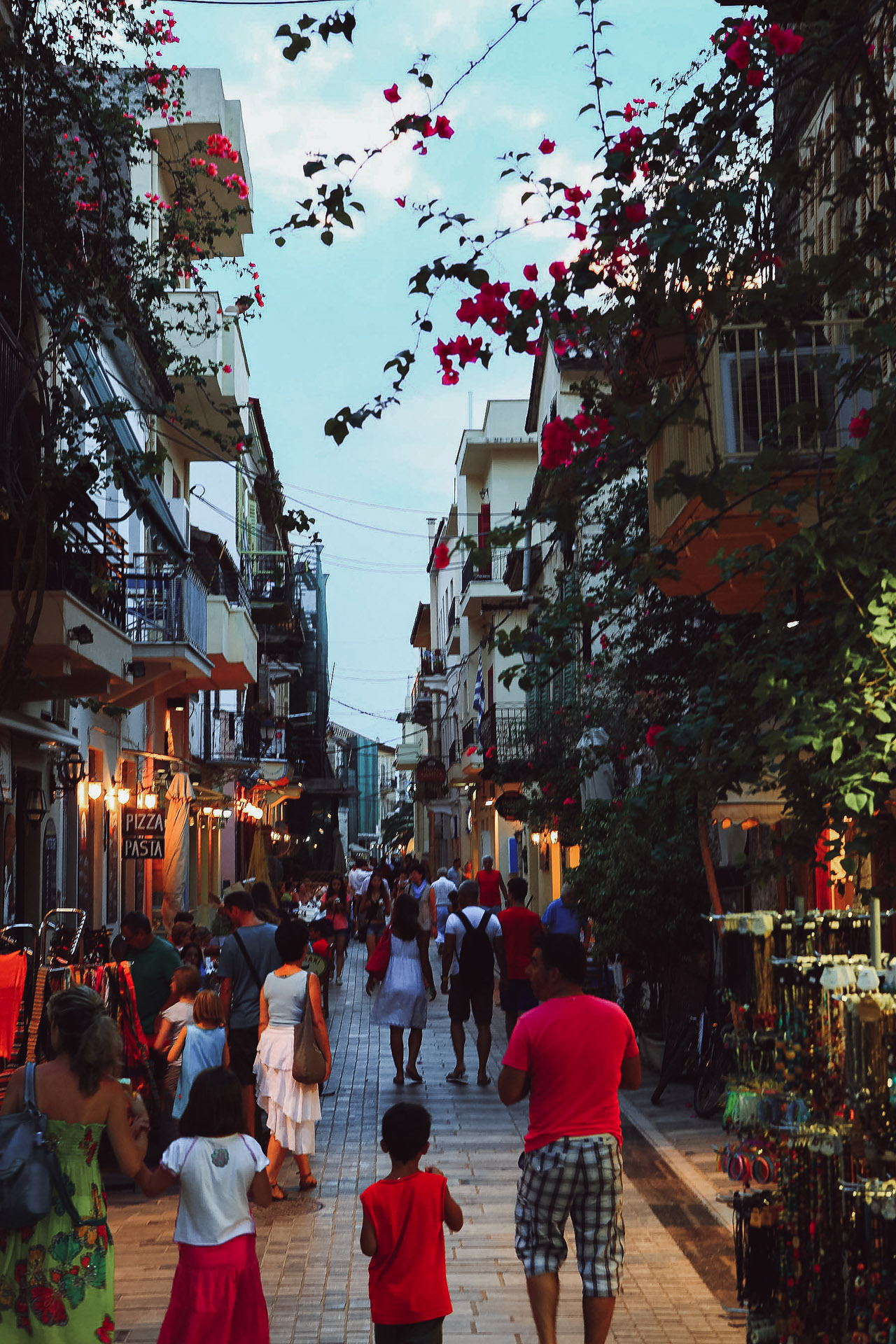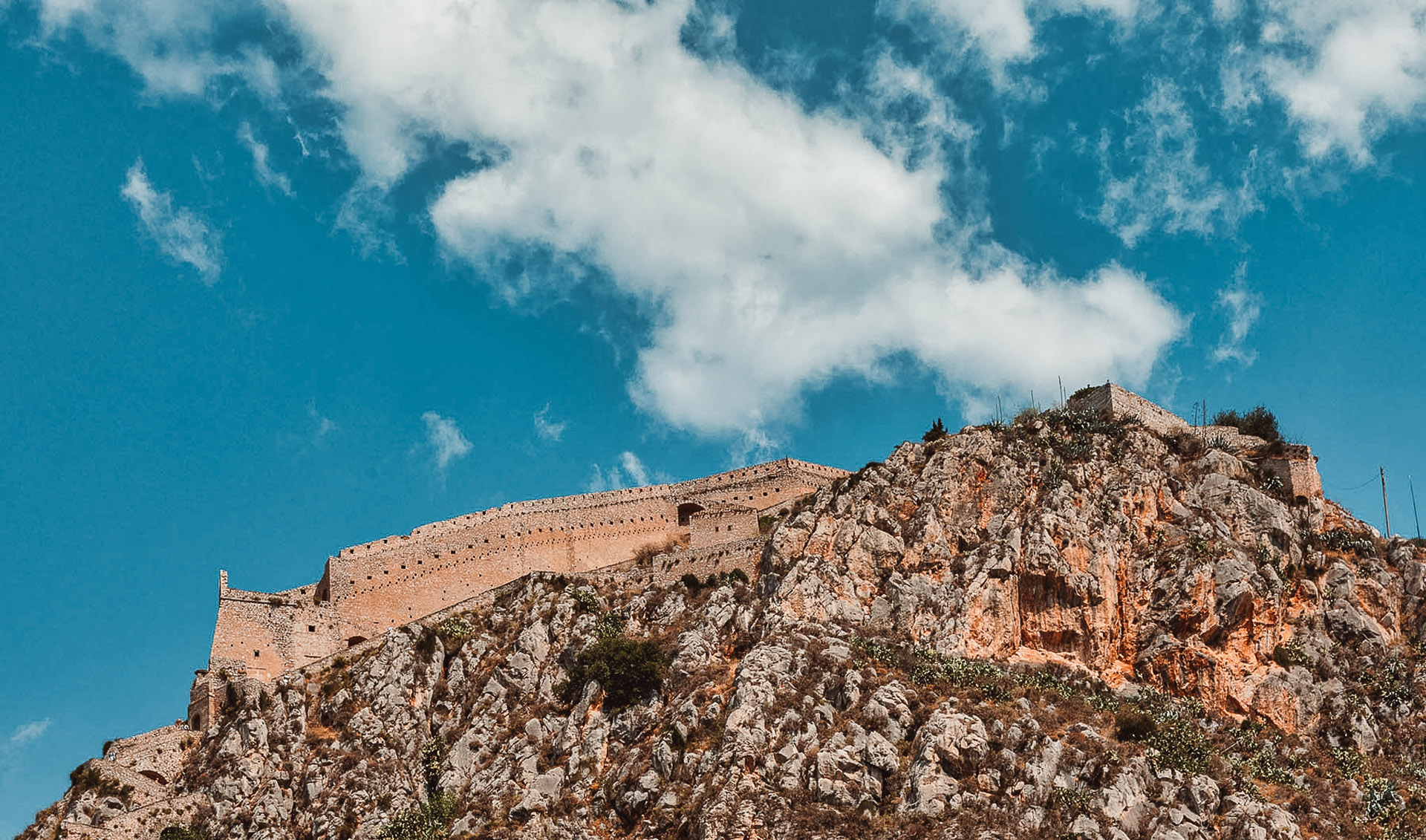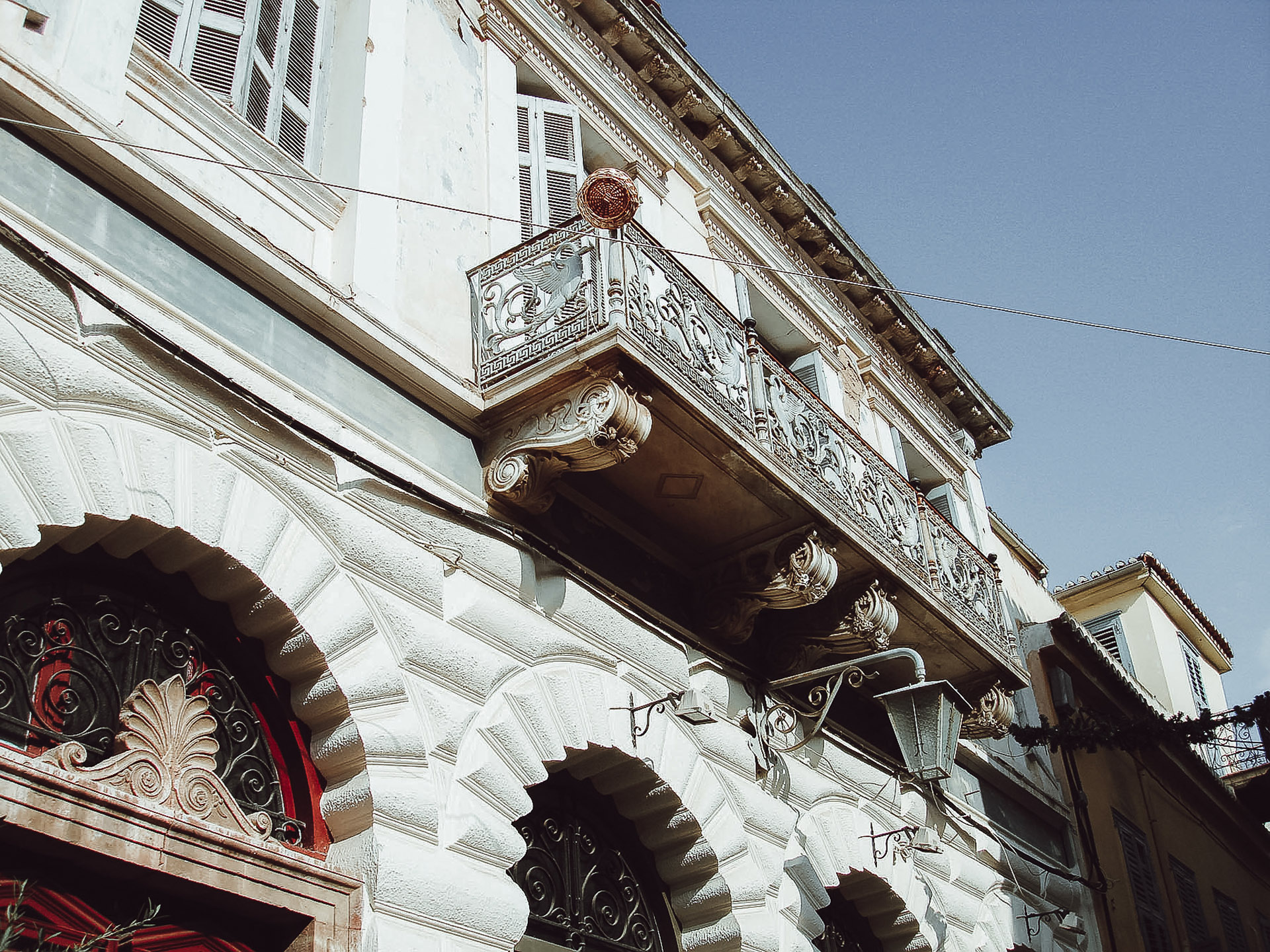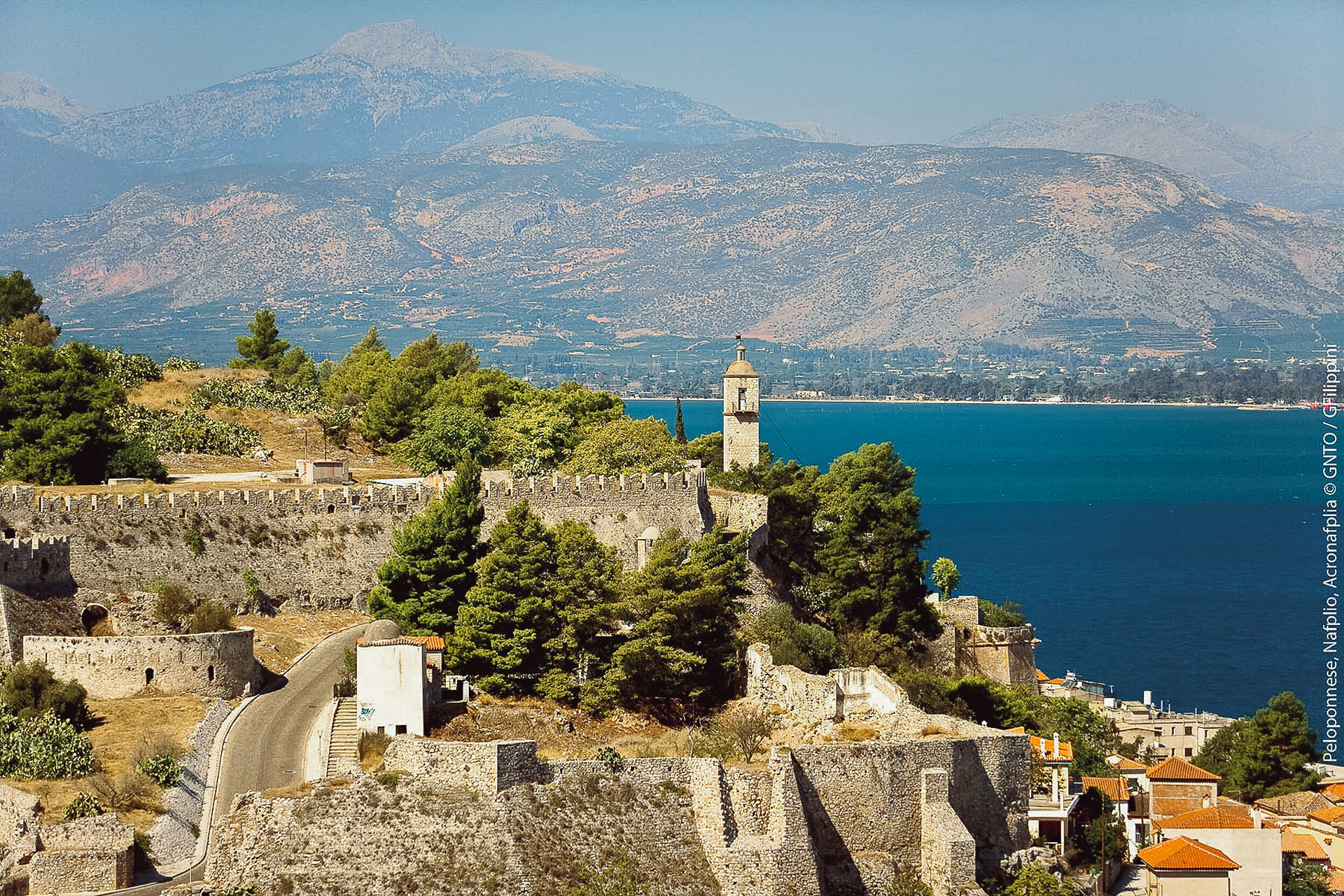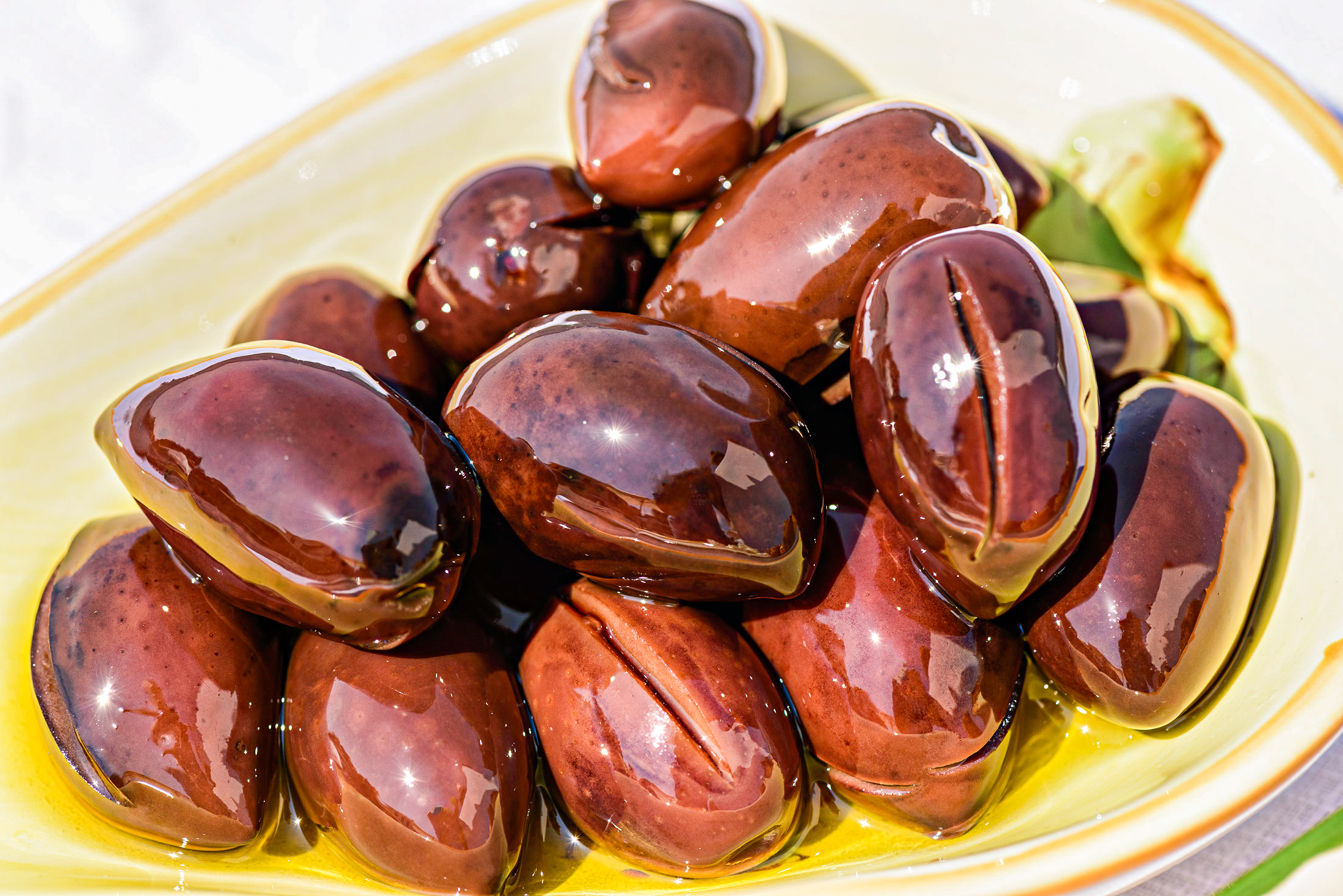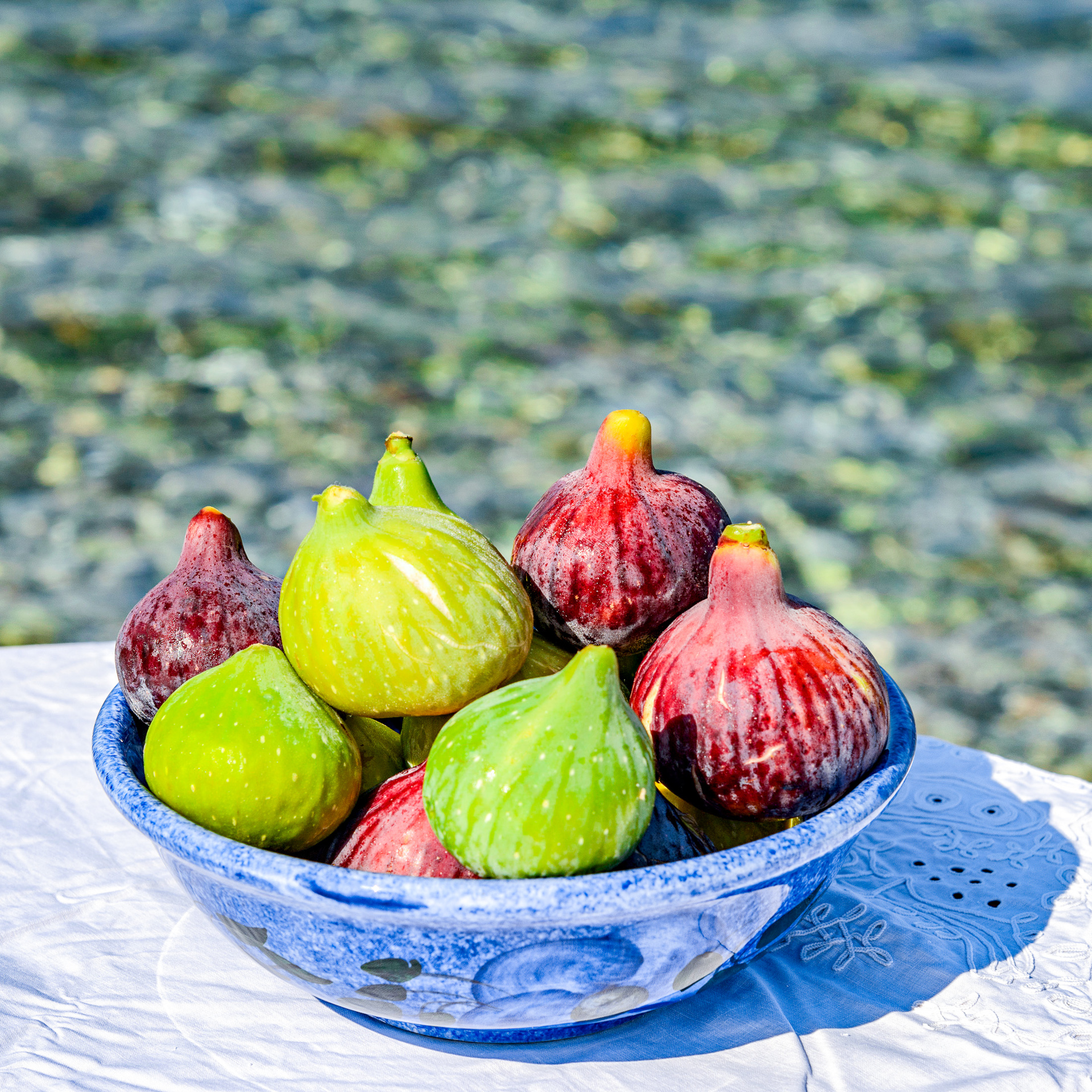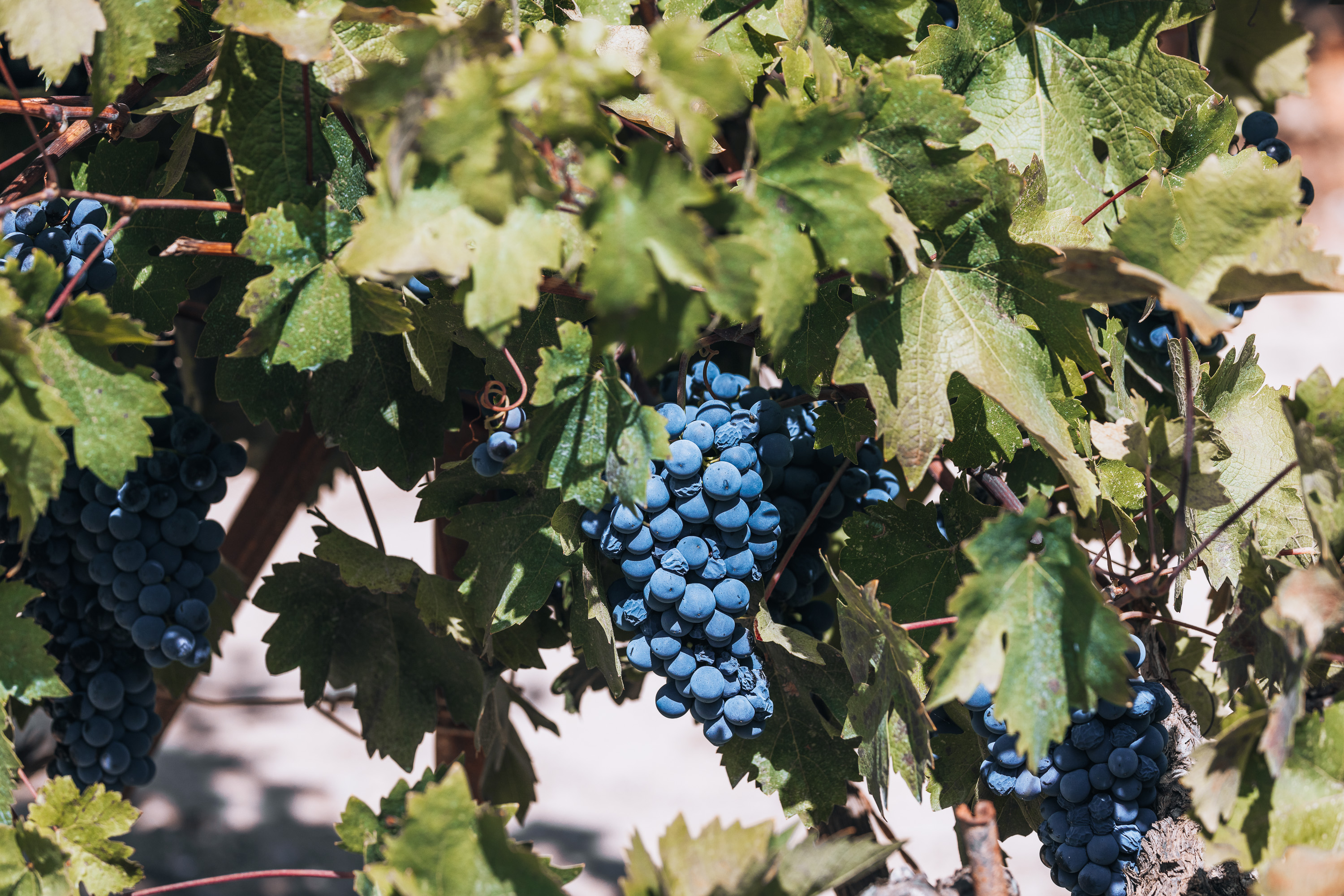One day in Nafplio
Nafplio: The perfect all-year-round destination!
An island fortress, a seaside walk, a beautiful old town, a hilltop castle – Nafplio is jam-packed full of history. But that’s only half the story - it’s also a lively town with some of the best food around, lots of great spots for coffee and one-off shops with quality souvenirs and crafts. Whatever time of year you visit, you’ll love the buzz in the streets and squares, and the relaxing vibe of the port and promenade.
And if all that hasn’t persuaded you to add Nafplio to your bucket list, booking.com’s Traveller Review Awards for 2022 reckon that it’s the fourth most welcoming city in the world, and in 2021 CNN ranked it as one of the most beautiful cities on the planet.
A STROLL ROUND THE CENTRE OF NAFPLIO
It would take days of happy wandering to fully explore Nafplio old-town, but if you’re short of time or just want to be a bit more focused in your explorations, start in Platia Syntagma. Here, you are right in the heart of the old town, surrounded by beautiful historic buildings that tell a story of the city’s varied history. For example, the Trianon was built as a mosque around 1600 when the Ottomans ruled the city. It’s had a chequered history as it was turned into a church by the Venetians, then back into a mosque during the second period of Ottoman rule, and was then a school for many years before becoming a magistrate’s court, a theatre and a cinema! More or less opposite the mosque, you can see the three-storey Archaeological Museum which was built as a Venetian barracks in 1713. The National Bank building brings us a bit more up to date as it was built between the first and second world wars. Nafplio was the first capital of Greece after the country gained independence from Ottoman rule, and just off the square, on Staikopoulou Street, you can see the building where the first Parliament was held.
From Staikopoulou Street, go along the narrow alley to the left of the parliament and you’ll find yourself on Kapodistriou Street. Turn left along the street towards the church of Agios Spyridon where Ioannis Kapodistiras, first head of the independent Greek state, was assassinated in 1831. The only hammam in the city is just across the street from the church, and continuing along the street you’ll find a pleasant small square.
Go up the steps on Potamianou street and you’ll pass the Catholic church known as Fragoklisia. Turn into Zygomala which will lead you to the picturesque Psaromahala district with its beautiful views.
There are two other squares in Nafplio that are well worth a visit - Trion Navarchon and Agios Georgios. You are never far from memories of the Greek War of Independence in the Peloponnese, and Trion Navarchon Square (which means Three Admirals) is dedicated to the British, French and Russian Admirals who orchestrated victory in the famous Naval Battle of Navarino during the Greek War of Independence. The square marks the entrance to the historic old town of the city and you’ll see the Town Hall which was the first high school in the independent Greek state, with classes starting in 1833. There is also a statue of King Otto and the cenotaph of Dimitris Ypsilantis, a hero of the War of Independence. Agios Georgios Square is a quiet neighbourhood square near a lovely shady park, and close to the Residence of Viceroy Armansperg who was regent and Prime minister of Greece in the 1830s.
BOURTZI
Nafplio really does have more than its fair share of great sites to visit, and the Bourtzi is one of the best. It’s a small island just off the waterfront that’s completely occupied by a Venetian castle from 1473. It’s a city landmark that you can see as you stroll along the seafront, or as you sit and enjoy a coffee, but if you want to get closer there are plenty of boat trips out to the island.
It was originally called Castello dello Soglio (castle of the throne), but then a huge chain was run from Akronafplia to the island to protect the port from invaders and the Venetians started to call it Porto Cadena (port of the chain). It was the Ottomans who gave it its current name which means island-fortress. Over the years it’s been used as a prison, a meeting place for the Greek government, a home for executioners, the main offices of the Greek Tourism Organisation (in the 1930s) and as a restaurant and luxury hotel in the 1960s and 1970s. Restoration work was carried out in 2022 so that it can now be used as a cultural space.
PALAMIDI CASTLE
Palamidi Castle is not just the largest and best preserved Venetian fortress in Greece, it’s also a wonderful viewpoint and a great way to learn some more about the history of Nafplio and Greece.
Palamidi has watched over Nafplio for more than 300 years and makes for a great day’s exploring. There are two ways up to the fortress. If you’re feeling fit and adventurous, grab a big bottle of water and head off up the 999 steps to the top (actually, there are really 857 steps, but local legends say 999 as it sounds better!) This is a great way to get a feel for Nafplio as you can look back and see the town unfolding below you as you climb. However if you don’t feel up to all these steps, don’t worry - there is also a road up to the fortress.
Once you reach the fortress itself, there’s a lot to see at Palamidi. You could spend hours wandering round its nooks and crannies and, of course, gazing out over the deep blue of the Argolic Gulf or down at the red tiled roofs of the city.
The hill was named after the prince Palamedes who fought with the Greeks in the Trojan war. The Venetians occupied the site in 1686. General Morosini wanted to build a castle here to protect the entrance to the Argolic Gulf, but it wasn’t until 1711 that building work finally began. The castle was designed by the engineers Ziaxich and Lassalle and it only took three years to build. However, the Venetians didn’t have much time to admire their handiwork as a year later the fortress fell to the Ottomans in the siege of Nafplio. A century later, in 1822, the Greeks captured the castle, again after a siege. This was the first act in the liberation of Nafplio, and also drew considerable admiration from the general European public as the castle was thought to have been invincible!
The castle’s defences relied on a system of eight tiered, mutually supporting bastions connected by walls. And each of these bastions was given a name by the Greeks when they captured the castle in 1822. So we now have "Grimani", "Robert" (in honour of the French philhellene who was killed in the battle of the acropolis), Miltiades, Achilles, Epaminondas, Phocians, Themistocles and Leonidas. There is also a small Orthodox church, Agios Andreas, within the castle.
WHO WAS PALAMEDES? Hero of the Trojan War, inventor, creator, writer, son of Nauplius and Hesione. According to various writers from ancient times, he was wise, handsome like Achilles, sober, virtuous and a leading figure!
It is believed that he invented measures and weights, coins and some letters of the alphabet (Ζ,Π,Φ, Χ), divided time into months, days and hours, invented chess, made astronomical calculations and much more.
However, Agamemnon and Odysseus were so envious of his achievements that he was accused of treason and killed by stoning. He became a model for the sophists and is often cited as one of the wisest ancient Greeks!
AKRONAFPLIA
Akronafplia is a rocky peninsula above the town. Its steep sides and commanding position looking out over the sea make it a natural defensive site and since ancient times people have been building fortifications on the rocks. Nowadays these fortifications tell the story of the town as you can see ancient Greek, Roman, Byzantine, Frankish, Venetian and Turkish ruins as you explore.
Start out from the square above Arvanitia beach and go up towards the old "Xenia" hotel. You will pass by the Grimani bastion, the Castel del Toro, the Frankish castle and the Roman Castle to reach the small church of Agioi Anargyroi.
Akronafplia has three levels of fortifications, each of which was a separate castle built in a specific historical period. The first wall was built in the 3rd century BC. and was reinforced by the Byzantines. The Franks built their own castle, which was completed by the Venetians who then built the Castel del Toro fortress under the acropolis, at the north point of the peninsula, during the period of the second Venetian rule. This castle was equipped with five cannons, “the five brothers". In recent history, the buildings on Akronafplia have been used as a military hospital, barracks and prisons. This is a great spot for enjoying the sunset, especially from beside the Old Clock Tower.
NAFPLIO HARBOUR
As you might expect from a cosmopolitan town by the sea, Nafplio has a charming harbour which is brimming with yachts and sailboats in the summer. You can stroll along beside the sea, check out all the different boats from local fishing vessels to cruise ships, and enjoy the view of the lighthouse and the Bourtzi. The harbour is a safe and secure place to moor with a port guard service watching over everything, and of course it has all the facilities boat owners need. If you are here in spring, look out for the spectacular Mediterranean Yacht Show which is organized by the Greek Yachting Association with the support of the Municipality of Nafplio.
THE ARCHAEOLOGICAL MUSEUM
It’s always good to find out something about the place you are visiting, and the Nafplio Archaeological Museum is a great place to brush up on some history. It has an important and well-displayed collection of finds from sites all over the area, with the oldest exhibit dating back to 32,000-21,000 BC! The museum is in the central square, so it makes for a perfect stop if you are strolling round the town. The building itself is also noteworthy as it is a three-story Venetian building from 1713 which was renovated and upgraded between 2003-2008, with co-financing from Greece and the European Union.
The exhibits are divided into sections which show how civilisation in Argolis evolved from remote prehistory up to late antiquity. One of the prize exhibits is the famous Dendra panoply, a 3500 year old suit of armour. There is something very moving about standing right beside an object which has emerged from so far back in our past, but which is still so personal and relatable.
Most of the items on display were found in the Fraghthi cave, or in Tiryntha, Midea, Dendra, Asine, Kazarma, Old Epidaurus or Ermioni. All in all, the museum has a wealth of interesting exhibits, including: large wheeled figurines from the 13th and 12th century BC which were found in ancient Midea and ancient Tiryns, the 12th century clay figure head known as "the Lord of Asine", Linear B tablets, amphorae, clay votive shields (models of shields placed in tombs etc) from the acropolis of Tiryns (beginning of the 7th century BC), a bronze helmet from the famous Mycenaean tomb at Tiryns (11th century BC), Neolithic clay vessels that are amongst the first to have been made and a series of clay anthropomorphic and animal figurines, etc.
The oldest exhibit in the Archaeological Museum is the Palaeolithic hearth complex from the rock shelter in the Kleisoura gorge, in Prosymna (32,000-21,000 BC).
Info
- Address: Syntagma Square, Nafplio, tel.: 0030 27520 27502.
BASIL PAPANTONIOU FOUNDATION
Even if you’ve only got a couple of days in Nafplio, try to make time for this museum (which you might come across as the Peloponnesian Folklore Foundation which was its previous name). It is a relatively small museum which does an excellent job in presenting a “slice of life” from times gone by in Nafplio. There is an emphasis on costumes but you’ll also see toys from around the world, jewellery, paintings and engravings and find out about some interesting personalities who used to live in the city.
The Foundation’s purpose is "the research, documentation, study, preservation and dissemination of modern Greek and global culture”, and its collection of approximately 50,000 objects puts it in a unique position to do this. Most of the exhibits date from the end of the 19th century to the early 20th century, and include items from various collections which have been donated to the museum. The Foundation’s Childhood Museum is in the town’s old railway station, and promises another “journey through time and space”.
In 1981 the IBP won the European Museum of the Year Award for an exhibition on the production, processing and application of natural textile materials in Greece.
(Vas. Alexandrou 1 and Sofroni, tel.: 0030 27520 28379, Open daily 09.00-14.30, Sunday: 09.30-15.00).
BEACHES TO DREAM OF ALL YEAR LONG!
There is a simple reason why people keep posting pictures of the beaches around Nafplio on social media – they’re just amazing!
Arvanitia. A great place to swim or relax all year round. It is a small town beach, below the Palamidi, and it does get busy during the summer. But it’s easily accessible, with a Blue Flag, a natural wind block, beautiful views and beach bars, so it’s well worth a visit.
Neraki. This is a beautiful and secluded pebble beach that is only accessible by foot. It is about one and a half kilometres from Akronafplia, and there’s no facilities at the beach so make sure you take plenty of water and anything else you might need with you. It’s a good place to go swimming as the water is crystal clear.
Karathona. This beach is a favourite with the locals! It’s 4 km from the town, so you can either drive there or walk along the shore front from Nafplio. Karathona is a good choice if you’ve got kids as the sea is shallow and there’s also a lifeguard station. On top of that, it is a large beach with facilities, clear sea, sand, pebbles, tamarind trees, palm trees and a Blue Flag.
Kandia. A famous, long beach with sand, fine pebbles, great sea and tamarisk trees. It has something for everyone with beach bars and umbrellas in some parts but also more remote spots with no facilities if you want a bit of peace and quiet. Popular with young people and families as it’s in Kania village with its cafes, shops and tavernas.

